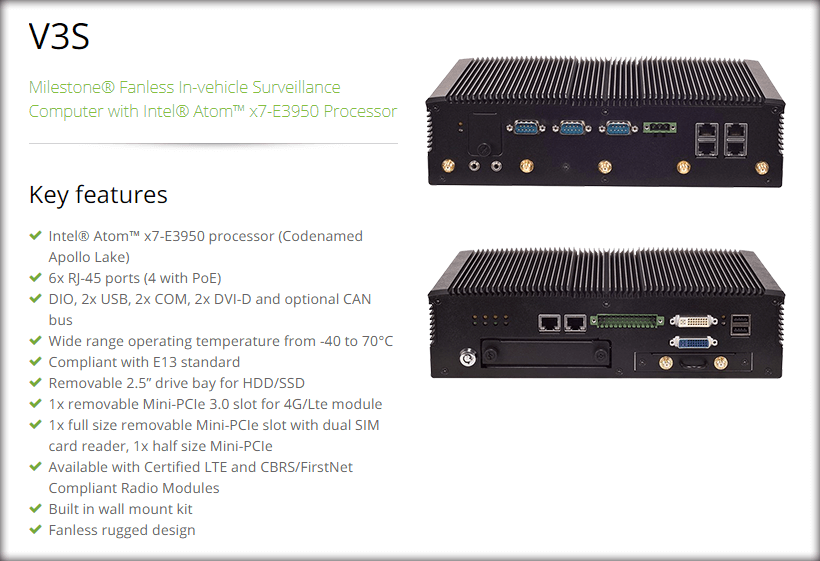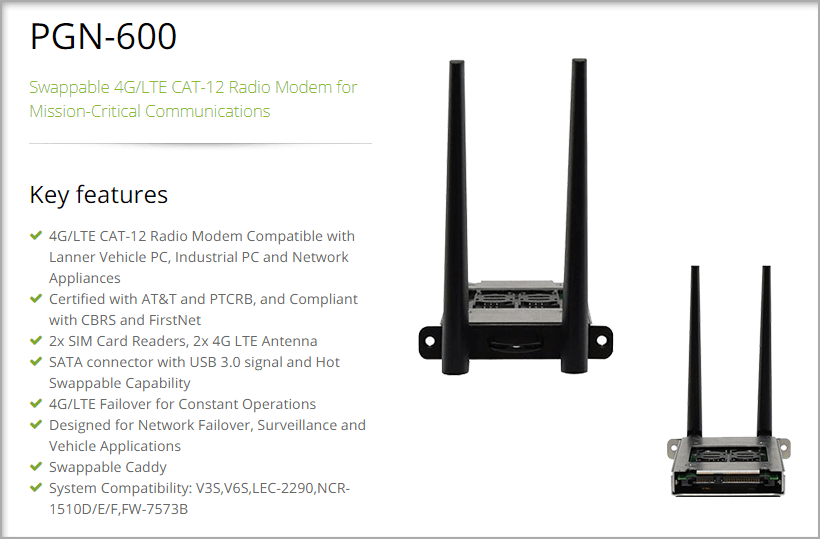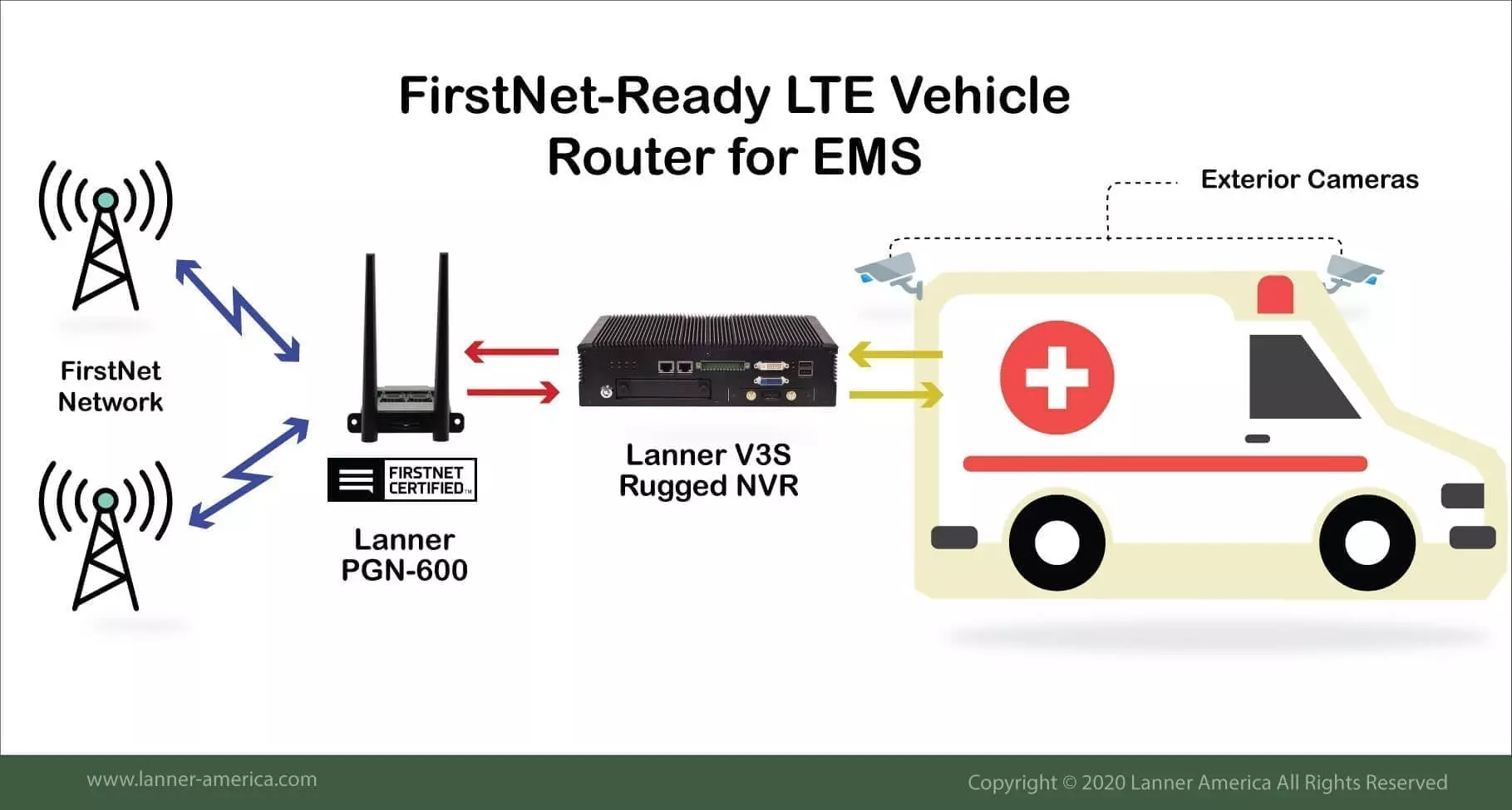
The Public Safety built the FirstNet (First Responder Network Authority) after the events of Sept. 11, 2001. They quickly realized how the inability of first responders to communicate with each other in real-time during critical events, affected teamwork.
Today, FirstNet is the only US-based nationwide high-speed broadband network built for first responders, from firefighters, police, to emergency medical services. Terrorist attacks or pandemics— where all first responders need to collaborate and communicate with each other, can make all the difference. Now, during the COVID-19 epidemic, public safety is benefiting from this network.
An ambulance, operating with high computational technology and connected to the FirstNet, will dramatically improve the care and treatment for patients on-route to the hospital.
In this solution brief, we will review the challenges faced by EMS vehicles or ambulances when attending emergency calls. Most medical applications are very time-sensitive and require an immediate response. Ambulances lack integrated first responder communications and other on-vehicle computational capabilities that may assist paramedics and drivers to save lives.
Lanner’s V3S is an in-vehicle rugged cellular router and NVR designed for video surveillance, recording, and analytics. It is the on-board gateway for LTE-connected ambulances. Its computational power is used to assist the ambulance driver, paramedics, and fleet management. V3S also provides the ambulance with a gateway to the FirstNet by integrating it with the LTE module PGN-600.
Challenges
When we think about ambulances, we only think about those big noisy and flashy vehicles running around to save lives. Of course, these specialty vehicles are built to transport patients in critical condition, by alerting and getting rid of the traffic ahead.
But there is a lot more going on…
If you have ever been in one, you know that ambulances are more than flashy and noisy vehicles. They run around traffic dodging obstacles on the way while at the same time trying to save a life with a large variety of onboard medical equipment.
EMS Vehicles Face the Following Challenges
- Medical applications are very time sensitive.
- Lack of knowledge on the on-board patient.
- Fast-running ambulances also pose a threat to pedestrians and other vehicles.
Medical applications are very time-sensitive. Although paramedics are highly trained EMS professionals — as they can make quick diagnoses and administer the immediate and necessary treatment, there are some cases where communication with the medical center and other first response units such as the police and fire department are critical in order to save lives.
Paramedics need to respond to emergency calls quickly and keep open communication with the closest hospital and other first response authorities. Unfortunately, there is a lack of real-time connectivity with other first responders and hospitals.
The typical ambulance keeps open communication with a central command via simple one-way radio. However, paramedics needing special assistance are starting to rely on mobile smartphones, tablets, and other devices. Unfortunately, commercial mobile networks are often unreliable, as they lack coverage, fast bandwidth, and reliability in some areas.
Another big challenge that EMS vehicles face is the lack of knowledge on the patient. The more paramedics know about the patient’s medical history or existing condition, the more chances of saving a life. Paramedics responding to emergency calls, do not usually know anything about the patient’s medical history, existing condition, or even close relatives.
Last but not least, the ambulance drivers also face a myriad of challenges. Depending on the type of emergency — a minute lost could mean the patient’s life. Ambulance drivers need to be fast and even break a few rules on the road, such as skip traffic lights, hard stops, dodging pedestrians, etc. — and that, of course, means ambulances also pose a threat to pedestrians and other drivers.
Solution

V3S uses the Intel® Atom™ x7-E3950 quad-core processor, which is empowered to support Ultra-HD (4K) resolution and better memory bandwidth for efficient computing. This processor can deliver exceptional CPU and GPU performance for applications like real-time surveillance and machine vision.
V3S also features rich I/O peripheral connectivity, including 2x serial COM ports, 2x DVI-D video output, USB, and Digital I/O ports. It also includes six GbE RJ45 (4x PoE) and a removable 2.5” drive bay.
To enable wireless network connectivity, V3S comes with two mini-PCIe sockets, one for the 4G/LTE module and the other with dual SIM card reader that supports 3G/4G/LTE cellular communications. V3S can be integrated with LTE radio modules PGN-300 and PGN-600. Both radio modules support commercial LTE, but PGN-600 supports FirstNet and CBRS.

Additionally, V3S is the first in-vehicle fanless NVR with on-board certified LTE connectivity, to become Milestone XProtect verified. Milestone XProtect is a platform that delivers video management software (VMS) to make surveillance easy to manage and deliver.
More Features?
- Optional Controller Area Network (CAN bus) for driving behavior analysis and vehicle maintenance. The CAN bus is a rugged vehicle bus standard that can help get the ambulance’s Onboard Diagnostics (OBD).
- Environmental endurance for resisting shock and wide temperatures. V3S is a fanless rugged on-vehicle appliance built to resist shock, vibration, wide temperatures (from -40 to 70°C), and humidity. V3S is compliant with E13 standard and has fulfilled the MIL-STD-810G shock and vibration resistance certifications.
- GPS tracking for keeping track of the fleet and assisting driving. Aside from mobile LTE tracking, V3S also comes with u-blox NEO-M8N/ADXL 345, which is a built-in GPS and GLONASS RF sensor system.

Benefits
The connected ambulance integrates networking, compute, and visual technologies, to enable the vehicle to serve as the hub between the patient and the hospital. The preliminary patient’s diagnosis performed on the ambulance can help shorten the treatment once the patient arrives at the hospital.
In fact, streaming data such as video and vital signs from the ambulance can reduce, even further, the treatment time in the hospital. Additionally, paramedics can also access the patient’s records beforehand and avoid any mistreatment.
Key Benefits
- Higher reliability and bandwidth. V3S enables optimized multi-WAN links within the connected ambulance. The V3S cellular router (integrating with PGN-600) solution for first responders allows concurrent multiple WAN links operating as load balancing or fault-mode within the vehicle. Having multiple WAN links from the onboard gateway allows higher reliability and faster bandwidth. To make this work, the appliance supports multiple mini-PCIe sockets with SIM slots.
- In-vehicle surveillance and ambulance tracking. Video telematics and surveillance can help emergency medical services keep track of its ambulance fleet and assist drivers via a set of external cameras and gain situational awareness. The V3S is a rugged NVR computer that can receive data from multiple IP cameras, RF-frequency based tracking (GPS and GLONASS) and vehicle diagnostics via the optional CAN bus. Additionally, the in-cab video surveillance can ensure safe driving and monitoring of the driver’s performance. Unfortunately, inside cameras that would record patients are not permitted due to the HIPAA compliance.
- Improved Coverage: PGN-600 is FirstNet LTE networks compliant. FirstNet dramatically improves 4G network coverage, as first responders always get prioritized with reliable and nationwide coverage. According to the FirstNet website, whenever the network is fully developed, the coverage will extend to 2.74 million square miles, covering 76.2 percent of the United States.
- An extra layer of network security: FirstNet adds a security layer to the patient’s sensitive data. The highly available, redundant, and isolated first responder network complies with many standard security regulations. Additionally, FirstNet’s cybersecurity experts at the Security Operations Center (SOC) monitor and manage traffic to ensure that the network is safe and available.
- Resist shock and vibration. Lanner’s V3S is a purpose-built rugged vehicle PC made to resist constant shock and vibration. It offers compliance such as MIL-STD-810G and Method 514.6 for shock and vibration, and E-13 for ambulance vehicle gateways. Additionally, V3S is a fanless appliance enclosed with corrugated aluminum; It can operate through a wide range of temperatures from -40 to 70°C (-40~158°F) and humidity levels of 5% to 95% (non-condensing).
Final Words
Medical applications are time-sensitive, especially those emergencies where every second count, and where successful communication between other first responders can save lives. Fast response ambulances and EMS vehicles can make all the difference.
Without a doubt, the combination of the in-vehicle powerful computational, rich I/O features, and the FirstNet-ready technology, V3S, can bring untapped potential to the emergency medical services.
V3S is the right on-board platform for EMS-response specialty vehicles. — A combination not found in most on-vehicle routers.
For more information on the V3S platform and the PGN-600 module, request a quote.
Photo source: By Denniz Futalan from Pexels.






